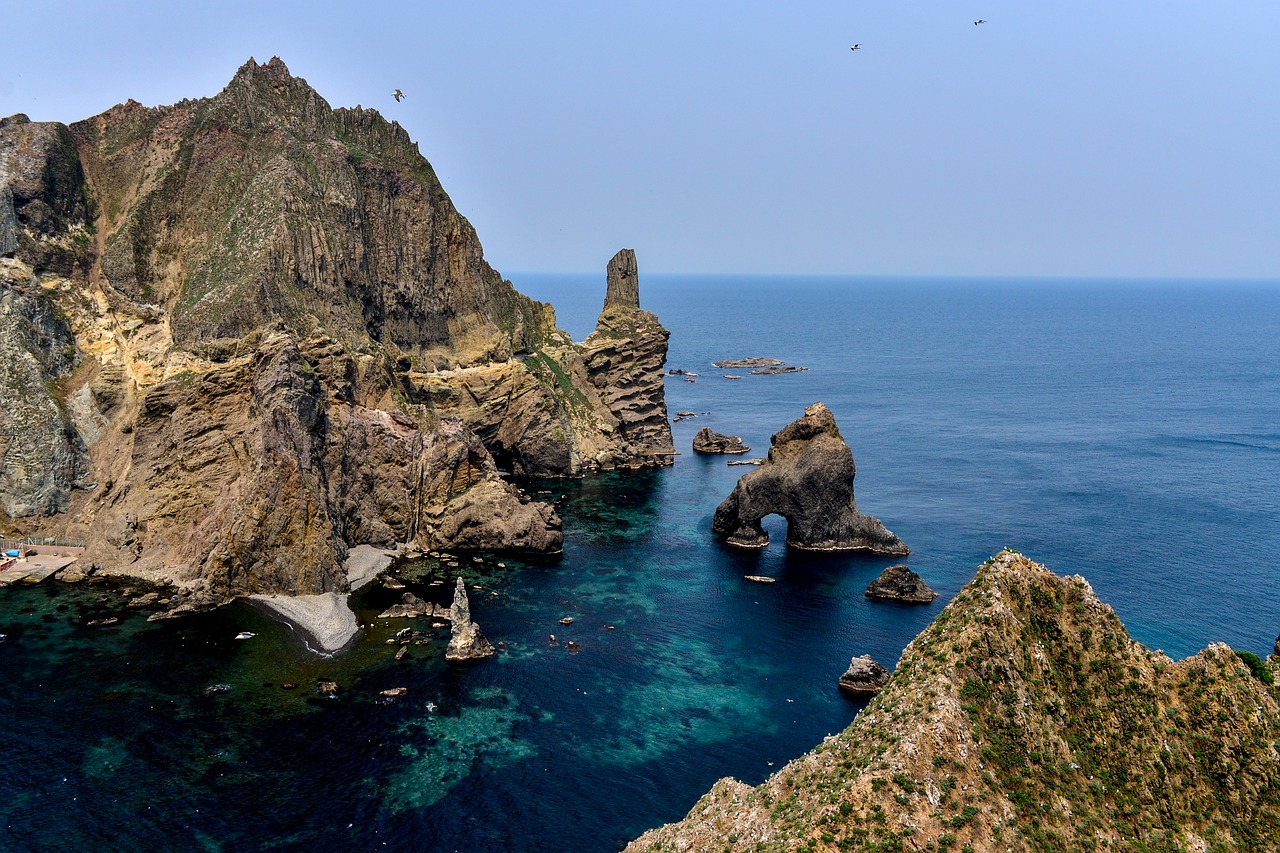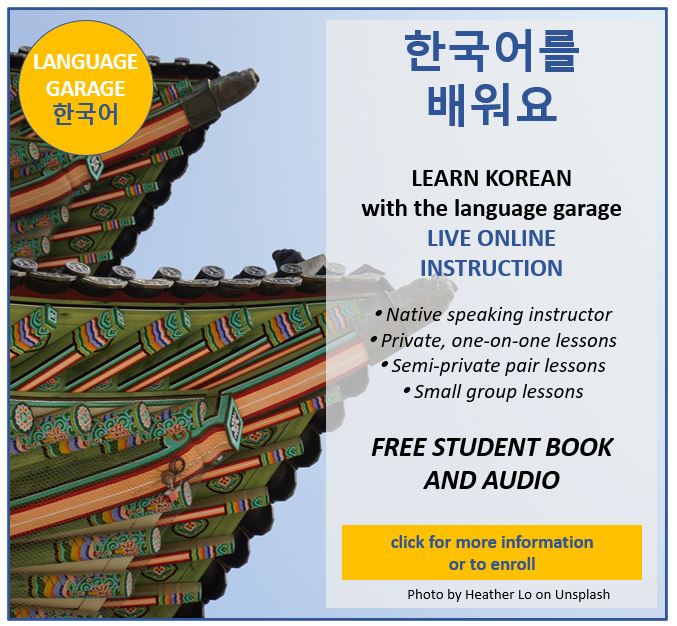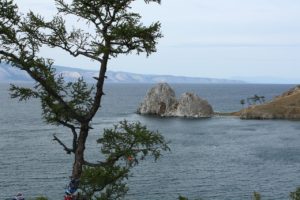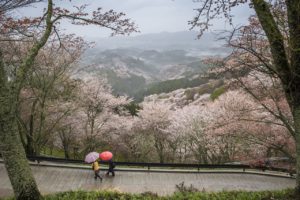Image by kyejung kim from Pixabay
In this post we’ll learn some vocabulary and expressions that you can use to talk about the natural world.
꽃, 나무, 풀, 그리고 신선한 공기 kkot, namu, pul, geuligo shinseonhan gonggi Flowers, Trees, Grass, and Fresh Air
Let’s start with some basics of nature that you can find around you even if most of the nature you see is in a park: 나무 namu (a tree), 꽃 kkot (a flower), 정원 jeongwon (a garden), 풀 pul (grass), 식물 shigmul (a plant), 호수 hosu (a lake), 연못 yeonmot (a pond), 길 gil (a path), 숲 sup (woods). You’re probably not going to see much wildlife in a park, but if you’d like to know how to talk about the animals you do see, check out this post.
- 공원에 나무들이 많아요.
gongwon-e namudeul-i manayo.
There are lots of trees in the park. - 저 아름다운 꽃을 보세요.
jeo areumdaun kkoch-eul boseyo.
Look at that beautiful flower.
- (우리) 잔디밭에앉자.
(uli) jandibat-e anjja.
Let’s sit in the grass. - (우리) 정원 옆에 있는 벤치에 앉자.
(uli) jeong-won yeop-e itneun benchi-e anjja.
Let’s sit on the bench next to the garden. - 숲으로 통하는 길이 있어요.
sup-eulo tongha-neun gil-i isseoyo.
There’s a path through the woods. - (우리) 연못을 돌며 걸어요.
(uli) yeonmos-eul dolmyeo geoleoyo.
Let’s walk around the pond. - 이 호수에 물고기가 있어요?
i hosu-e mulgogi-ga isseoyo?
Are there fish in this lake? - 이 호수는 얕아요 (아니면) 깊어요?
i hosu-neun yat-ayo (animyeon) gip-eoyo?
Is the lake shallow or deep?
나무와 식물 namuwa shigmul Trees and Plants
No matter where we are, there’s usually some kind of plant life around us, even if it’s in a pot in the corner of your office: 화초 hwacho (houseplant), 화분 hwabun (flowerpot), 장미 jangmi (rose), 가시 gashi (thorn), 흙 heul (soil), 잎 ip (leaf), 도토리 dotoli (acorn), 줄기 julgi (stem), 씨, 씨앗 ssi, ssiat (seed), 견과, 너트 gyeongwa, neoteu (nut), 식물에 물을 주다 shigmul-e mul-eul juda (to water a plant), 씨를 (씨앗을) 심다 ssi-leul (ssias-eul) simda (to plant a seed), 피다; 꽃이 피다 pida; kkoch-i pida (to bloom; flowers bloom), 자라다; 식물이 자라다 jalada; shigmul-i jalada (to grow; plants grow).
- 내 식물에 물을 줘야 해요.
nae shigmul-e mul-eul jwoya haeyo.
I need to water my plants. - 화초가 많아요.
hwacho-ga manayo.
We have a lot of houseplants. - 화분이 정말 예뻐요.
hwabun-i jeongmal yeppeoyo.
That’s a beautiful flowerpot. - 저 식물의 잎이 갈색으로 변하고 있어요.
jeo shigmul-e ip-i galsaeg-eulo byeonhago isseoyo.
That plant’s leaves are turning brown. - 도토리가 나무에서 떨어지고 있어요.
dotoli-ga namu-eseo tteol-eojigo isseoyo.
Acorns are falling from the tree. - 장미는 줄기에 가시가 있어요.
jangmi-neun julgi-e gashi-ga isseoyo.
Roses have thorns on their stems. - 저 나무는 단풍나무예요, 참나무 예요?
jeo namu-neun danpungnamuyeyo, chamnamu yeyo?
Is that tree a maple or an oak? - 소나무는 겨울에 푸르다.
sonamu-neun gyeoul-e puleuda.
Pine trees are green in the winter. - 정원에 토마토 씨앗을 심었어요.
jeongwon-e tomato ssias-eul shimeosseoyo.
I planted tomato seeds in the garden. - 그 꽃들은 봄에 핍니다.
geu kkotdeul-eun bom-e pimnida.
The flowers bloom in the spring. - 정원에 있는 식물들이 빨리 자라고 있어요.
jeongwon-e itneun shigmuldeul-i ppalli jalago isseoyo.
The plants in your garden are growing quickly.
언덕, 강, 계곡 eondeog, gang, gyegog Hills, Rivers, and Valleys
Let’s add some more nature vocabulary: 언덕 eondeog (hill), 계곡 gyegog (valley), 강 gang (river), 개울 gaeul (stream), 폭포 pogpo (waterfall); 들판 deulpan (field), 목초지, 초원 mogchoji, chowon (meadow), 돌 dol (rock), 바위 bawi (boulder), 늪 neup (swamp).
- 우리 집은 언덕에 있어요.
uli jib-eun eondeog-e isseoyo.
Our house is on a hill. - 우리는 강 옆에 살아요.
uli-neun gang yeop-e salayo.
We live next to a river. - 강물이 빨리 흘러요.
gangmul-i ppalli heulleoyo.
The river runs quickly here. - 근처에 아름다운 폭포가 있어요.
geuncheo-e aleumdaun pogpo-ga isseoyo.
There’s a beautiful waterfall nearby. - 계곡에 많은 농장이 있어요.
gyegog-e maneun nongjang-i isseoyo.
There are a lot of farms in the valley. - 우리 집 근처 숲에 작은 개울이 있어요.
uli jib geuncheo sup-e jageun gaeul-i isseoyo.
There is a little stream in the woods near our house. - 우리는 들판을 가로질러 걸었어요.
ulineun deulpan-eul galojilleo geoleosseoyo.
We walked across the field. - 초원에 아름다운 야생화가 있어요.
chowon-e aleumdaun yasaenghwaga isseoyo.
There are beautiful wild flowers in the meadow. - 산비탈에 많은 암석과 바위들이 있어요.
sanbital-e maneun amseoggwa bawi-deul-i isseoyo.
There are a lot of rocks and boulders on the hillside. - 이 길은 늪을 통과해요.
i gil-eun neup-eul tong-gwahaeyo.
This road goes through a swamp.
산과 숲 sangwa sup Mountains and Forests
If you ever get to the mountains, you may need to say: 산 san (a mountain); 산맥 sanmaeg (a mountain range); 산의 정상 san-e jeongsang (the summit of the mountain); 산을 하이킹 하다 san-eul haiking hada (to hike in the mountains); 산을 오르다 san-eul oleuda (to climb a mountain); 봉우리 bong-uli (a peak); 절벽 jeolbyeog (a cliff); 숲 sup (a forest); 숲에서 야영하다 sup-eseo yayeonghada (to camp in the forest); 소나무 sonamu (pine trees); 단풍나무 danpungnamu (maple trees); 참나무 chamnamu (oak trees); 자작나무 jajagnamu (birch trees); 야생동물 yasaengdongmul (wild animals).
- 이 나라에는 산맥이 두개 있어요.
i nala-eneun sanmaeg-i dugae isseoyo.
There are two mountain ranges in this country. - 우리는 창문에서 아름다운 산을 볼 수 있어요.
uli-neun changmun-eseo aleumdaun san-eul bol su isseoyo.
We can see beautiful mountains from our window. - 이 산의 정상은 얼마나 높아요?
i san-e jeongsang-eun eolmana nopayo?
How high is the summit of this mountain? - 산봉우리가 눈에 덮여 있어요.
sanbonguli-ga nun-e deopyeo isseoyo.
The mountain peaks are covered in snow. - 그 절벽들은 얼마나 높아요?
geu jeolbyeogdeul-eun eolmana nopayo?
How high are those cliffs? - 숲에서 야영하는 것을 좋아해요.
sup-eseo yayeonghaneun geos-eul joahaeyo.
I like to camp in the forest. - 숲에 소나무/ 단풍나무/ 자작나무/ 참나무가 있어요.
sup-e sonamu/ danpungnamu/ jajagnamu/ chamnamuga iss-eoyo.
There are pine trees/maple trees/birch trees/oak trees in this forest. - 이 숲에 야생동물들이 있어요?
i sup-e yasaengdongmuldeul-i isseoyo?
Are there wild animals in this forest?
세계 segye The World
Let’s finish with some geographical terms that you can use to talk about the natural world. 대륙 daelyug (continent), 대양 daeyang (ocean), 바다 bada (sea), 만 man (bay), 해안 hae-an (coast), 섬 seom (island), 반도 bando (peninsula), 사막 samag (desert), 밀림, 정글 millim, jeonggeul (jungle), 빙하bingha (glacier), 빙산 bingsan (iceberg), 북극/ 남극 buggeug/ namgeug (north/south pole), 북/ 남/ 동/ 서 bug/ nam/ dong/ seo (north/south/east/west).
- 몇개의 대륙이 있나요?
myeotgae-e daelyug-i itnayo?
How many continents are there? - 바다는 넓고 깊어요.
bada-neun neolgo gipeoyo.
The ocean is wide and deep. - 바다에서 수영하는 것을 좋아해요.
bada-eseo suyeongha-neun geoseul joahaeyo.
I love swimming in the sea. - 그 강은 큰 만으로 흘러 들어가요.
geu gang-eun keun man-eulo heulleo deuleogayo.
The river empties into a big bay. - 우리는 해안을 따라 운전했어요.
uli-neun haean-eul ttala unjeonhaesseoyo.
We drove along the coast. - 섬에 가려면 페리를 타야 해요.
seom-e galyeomyeon peli-leul taya haeyo.
You have to take a ferry to get to the island. - 사막은 덥고 건조해요.
samag-eun deobgo geonjohaeyo.
The desert is hot and dry. - 많은 다양한 식물과 동물들이 정글에 살아요.
maneun dayanghan shigmulgwa dongmuldeul-i jeonggeul-e salayo.
Many different plants and animals live in the jungle. - 빙하가 점점 작아지고 있어요.
bingha-ga jeomjeom jagajigo isseoyo.
The glaciers are getting smaller and smaller. - 북극/ 남극 근처의 바다에는 빙산이 있어요.
buggeug/ namgeug geuncheo-e bada-eneun bingsan-i isseoyo.
There are icebergs in the ocean near the north/south pole. - 해는 동쪽에서 뜨고 서쪽에서 져요.
hae-neun dongjjog-eseo tteugo seojjog-eseo jyeoyo.
The sun rises in the east and sets in the west.
Learn Korean with the Language Garage
Check out our other posts on Korean language, culture, and more. And if you’re looking for convenient and affordable live Korean lessons with a real teacher, check out The Language Garage. Our lessons are given online in a virtual classroom, so it doesn’t matter where you live or work – we can come to you. And we have flexible options, with a free trial so that you can decide if there’s a fit. Check us out!





